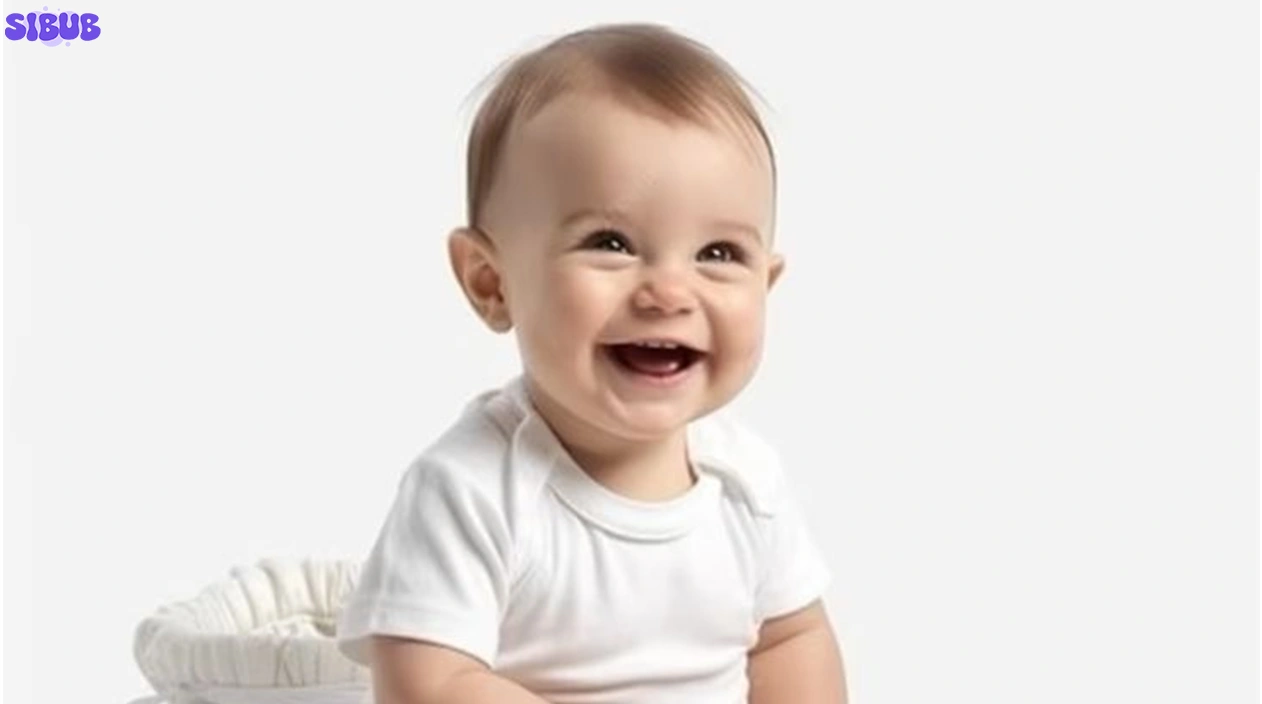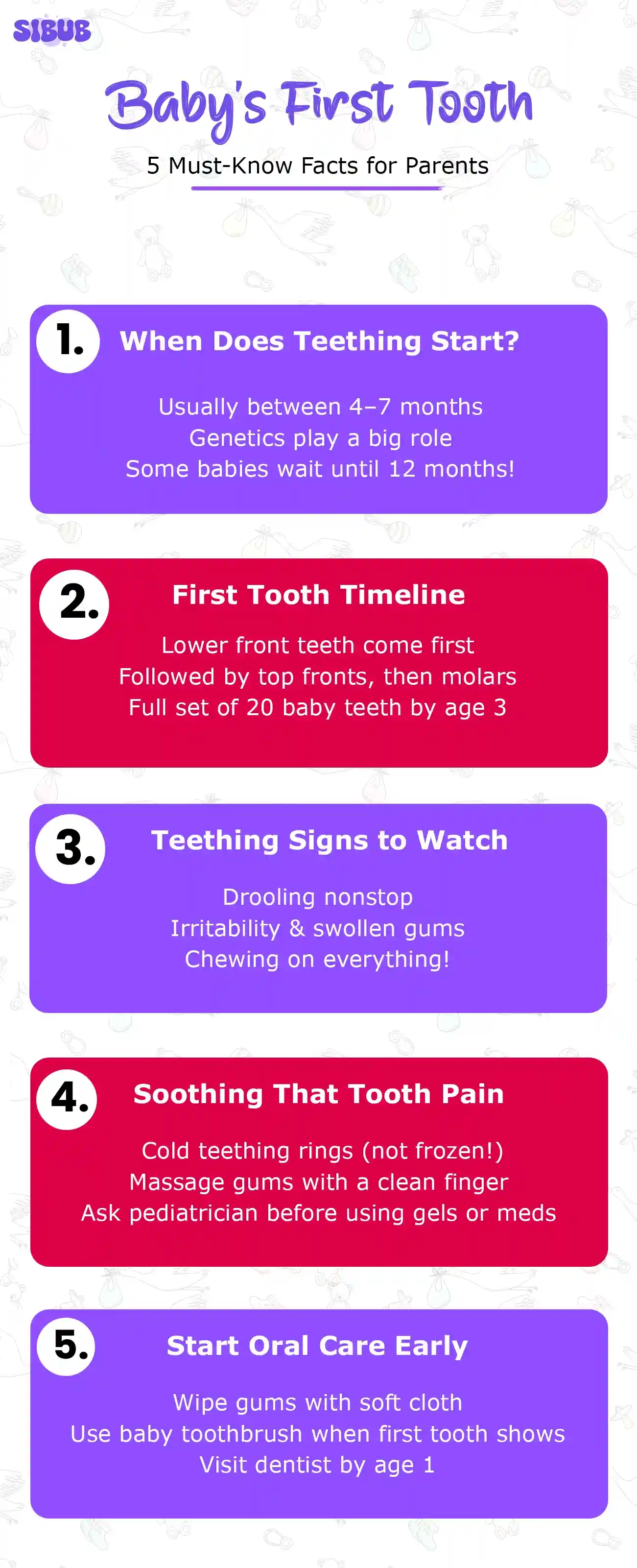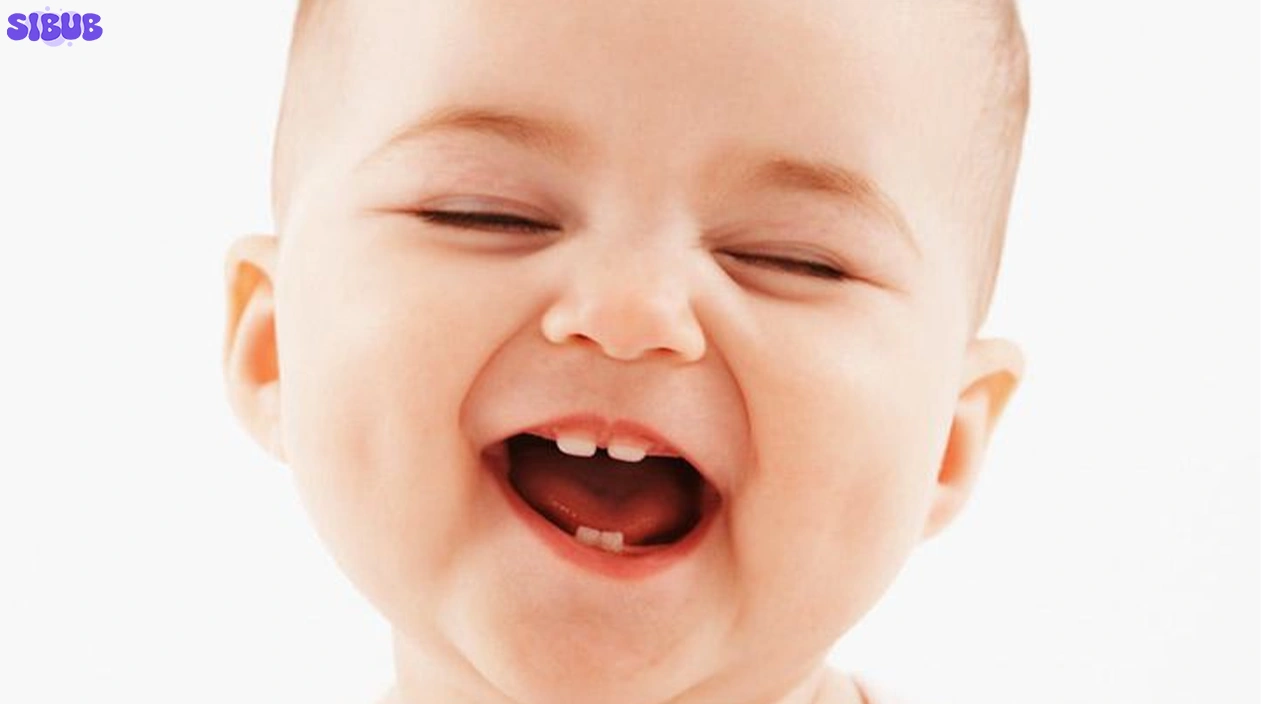“Every tooth in a man’s head is more valuable than a diamond” – Miguel De Cervantes.
For many parents, nothing is more exciting than the day their child gets their first tiny tooth. It signals the beginning of tooth development and overall growth. However, of course, this step comes with a myriad of doubts: When does an infant get teeth? How much pain is involved? How do I know they’re in the process of teething? Our objective with this guide is to provide clarity, proof, and support so that parents can confidently manage their babies’ teething stages.
When Does An Infant Get Teeth?
Most children start to teethe between the ages of 4-7 months. Though this period is not set in stone. More often than not, personal genetics alongside diet tend to influence the age of eruption quite heavily. There are some extreme cases, for instance, where infants may start cutting their first tooth as early as three months, while others may not sprout a single tooth until their first birthday.
Sometimes, parents get worried about when does baby get first tooth?

Typically speaking, the average age for a Child’s first tooth is around 6 months. Although if your child tends to be a late bloomer, this usually isn’t a reason to worry. If there is no evidence of any teething by 18 months, then visiting your pediatrician is recommended.
Visit: Explaining Santa: Is Santa Real and How to Break the News Kindly
The Sequence of The First Tooth
The lower central incisors (the two lower front teeth) typically are the first ones to emerge. The upper central incisors are next to join the club, then come the lateral incisors, first molars, canines, and lastly the second molars.
So, answering the question of when do infants get their first tooth? The first one usually pops up at around 6 to 10 months, and from then on, the process of baby teeth appearing begins. Most children by the age of 3 manage to complete the milestone of having 20 primary teeth.

Discover: 120 Self Love Affirmations to Boost Self-Esteem
Teething Signs You Should Not Ignore
Understanding the teething symptoms can help in soothing the baby’s discomfort. Some of the most common indicators are:
- Over-the-top chewing
- Irritability or increased fussiness
- Tender or swollen gums
- Increased saliva production
- Disturbed sleeping patterns
Other symptoms may include mild appetite and loss of fever. High fever, diarrhea as well as spots should be noted as not being connected to teething. If any of these symptoms do arise, make sure to contact your child’s doctor.

Comforting a Teething Baby
The eruption of the primary dentition is often associated with discomfort in infants. Relief can be provided through the following soothing methods:
- Provide refrigerated teething rings (never frozen).
- Gently stroke the developing gums with a clean digit.
- Use a clean, damp cloth to remove excessive salivation to reduce skin rashes due to irritation.
It is clear that no two babies will experience teething pain in the same manner. While some babies may go through this stage of development without any fuss, others may struggle significantly. This inconsistency makes it difficult to figure out when does an infant get teeth. based solely on behavioral indicators.
In the opinion of some parents, gels for easing teething discomfort could be useful; however, most pediatricians advise against them. If sleep or feeding is disrupted due to discomfort, contrast that with talking to your physician about the use of infant acetaminophen.
Explore: Top Benefits of Summer Camp for Kids
How Long Does Teething Last?
Teething usually starts around the 4 to 6-month mark, but the exact age can differ from child to child. The entire process can last until the child turns 2 years old.
In case of wondering how long a baby’s teeth take to come in, the time frame ranges from 4 to 30 weeks, which means “a few days to more than a month”, thus making the overall process of teething last smoothly for everyone involved.
Oral Care Begins Before the First Tooth
In case you want to maintain proper oral hygiene for your infant, there is no need to wait for the teething period to set in. With the use of a soft cloth, the parents of the child can gently wipe his/her gums to prevent the buildup of bacteria. Flossing becomes essential as soon as the first tooth appears, so start by changing from the washcloth to a soft-bristle baby toothbrush.
Learn More: Molluscum Contagiosum Treatment for Children
If your child is nearing their first birthday or is half a year older than the age when the first tooth extracts, it’s time to take him/her to a doctor’s appointment. The dentist’s office specializes in children’s dentistry. They maintain and manage your child’s dental health and offer great advice on dental care routines.
Baby’s First Teeth: Timeline and Expectations
For both babies and parents, the process of cutting teeth can be quite poignant. If you’re curious, “When do babies cut their first teeth?” is commonly around 6 months, albeit with a broad window of “within reason”.
Some of the symptoms to expect are:
- Excessive drooling
- Biting fingers or toys
- Swollen or red gums
A tooth may emerge with no gesture whatsoever in advance warning. One day, a gleaming white tooth may be seen peeking out.
Check this out: Acetaminophen for Fever and Pain in Children: Safe Dosing and Tips for Parents
Conclusion
You now know when does an infant get teeth?, helpful signs, and appropriate ways to give assistance. Though sometimes stressful, this stage, like all others, makes it easier for your little one to grow. Your child has a special schedule and timeline that needs to be understood well, while good oral hygiene and care are practiced early on.
No matter the discrepancy and unique traits each baby comes with, the ultimate goal is the accumulation of teeth, which leads to an exuberant smile.
